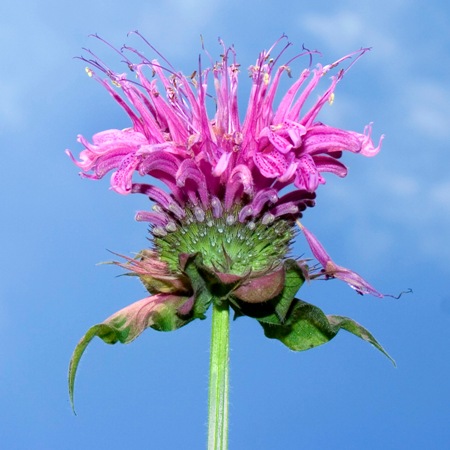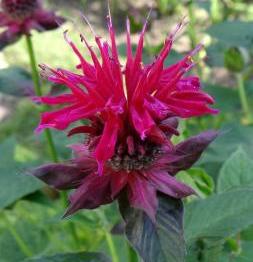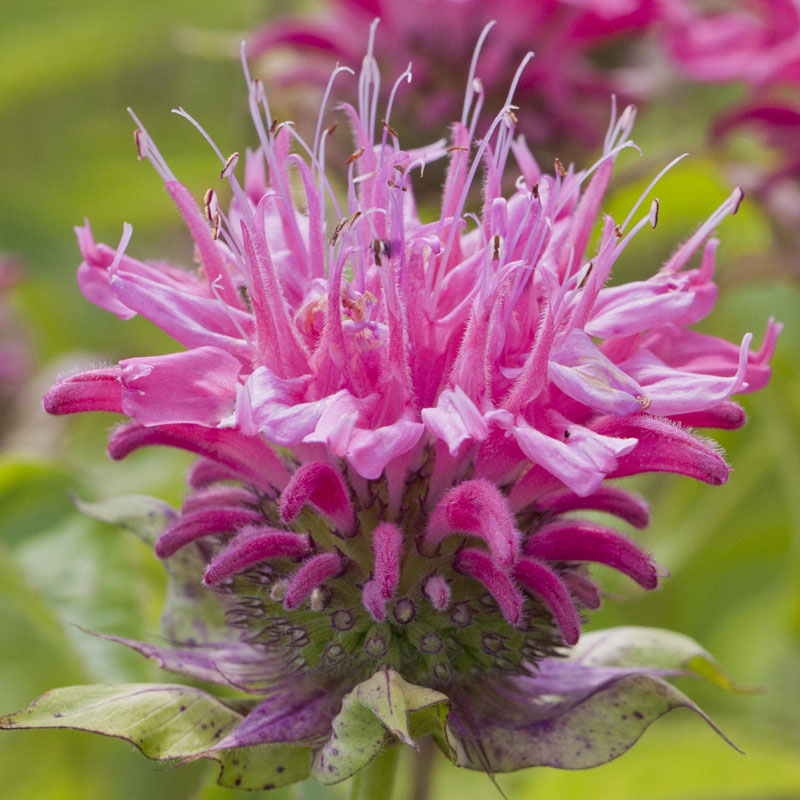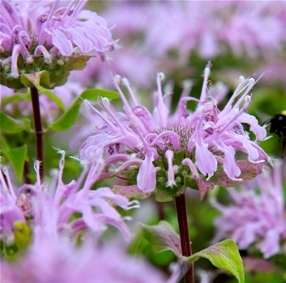




Botanical name Monarda fistulosa
Synonyms Horsemint
Botanical synonym: Monarda menthaefolia L.
Family Lamiaceae
Source Flowering plant
Description / Color / Consistency: A thin, light pale pink.
Aromatic Summary / Note / Strength of Aroma Herbaceous, floral, slight citrus back note.
Blends With Lavender, Lemon, Lime, Geranium, Sweet Orange, Wild Orange, Petitgrain, Mandarin, Sandalwood, Tangerine, yuzu.
Product Abstract
Wild Bergamot is a herb native to the woodlands of North America. It bears flowers of scarlet, pink, white or purple and has green, oval leaves. The leaves have a red-colored vein running through them. The reason that bee balm is also given the name bergamot is that the aroma reminded the botanist, Dr Nicholas Mondares – whose name was given to the Latin name of the plant, Mondara – of the citrus aroma of bergamot
The herb bergamot is rarely used as an essential oil in aromatherapy practice but it does have therapeutic properties for herbal medicine practice. The leaf of bee balm is used as an infusion in tea to help in the relief of insomnia, menstrual pain, nausea, and flatulence.
Harvesting
Seed - sow mid to late spring in a cold frame. Germination usually takes place within 10 - 40 days at 20°c. When large enough to handle, prick the seedlings out into individual pots and plant them out into their permanent positions in early summer. The seed can also be sown in situ in late summer in areas where the winters are not too severe and will produce larger plants. Cuttings of soft basal shoots in spring. Harvest the shoots with plenty of underground stem when they are about 8 - 10cm above the ground
Common Usage
Caution
Those who have thyroid issues should use caution when ingesting bee balm; also, those who are pregnant should not take it internally.
Key constituents
Geraniol 86.8–93.2%
Linalool 0.8–3.1%
Neral 1.4–2.0%
g-Terpinene 0–1.8%
Geranial 1.2–1.6%
Nerol 0.8–1.4%
b-Myrcene 0–1.3%
1-Octen-3-ol 0.2–1.1%
Safety summary
Hazards Drug interaction; skin sensitization (low risk).
Cautions (oral) Drugs metabolized by CYP2B6 (Appendix B). Maximum dermal use level: 5.7%
Our safety advice
Our dermal maximum is based on 93.2% geraniol content and a geraniol limit of 5.3%
Organ-specific effects
Adverse skin reactions No information found.
Systemic effects
Acute toxicity No information found for the oil. Geraniol shows no signs of acute or subchronic toxicity.
Carcinogenic/anticarcinogenic potential
No information ! found, but wild bergamot oil contains no known carcinogens. Geraniol and citral (geranialþneral) display anticarcinogenic activity. Drug interactions: Since citral and geraniol inhibit CYP2B6 there is a theoretical risk of interaction between wild bergamot oil and drugs metabolized by this enzyme.
Comments
Limited availability.